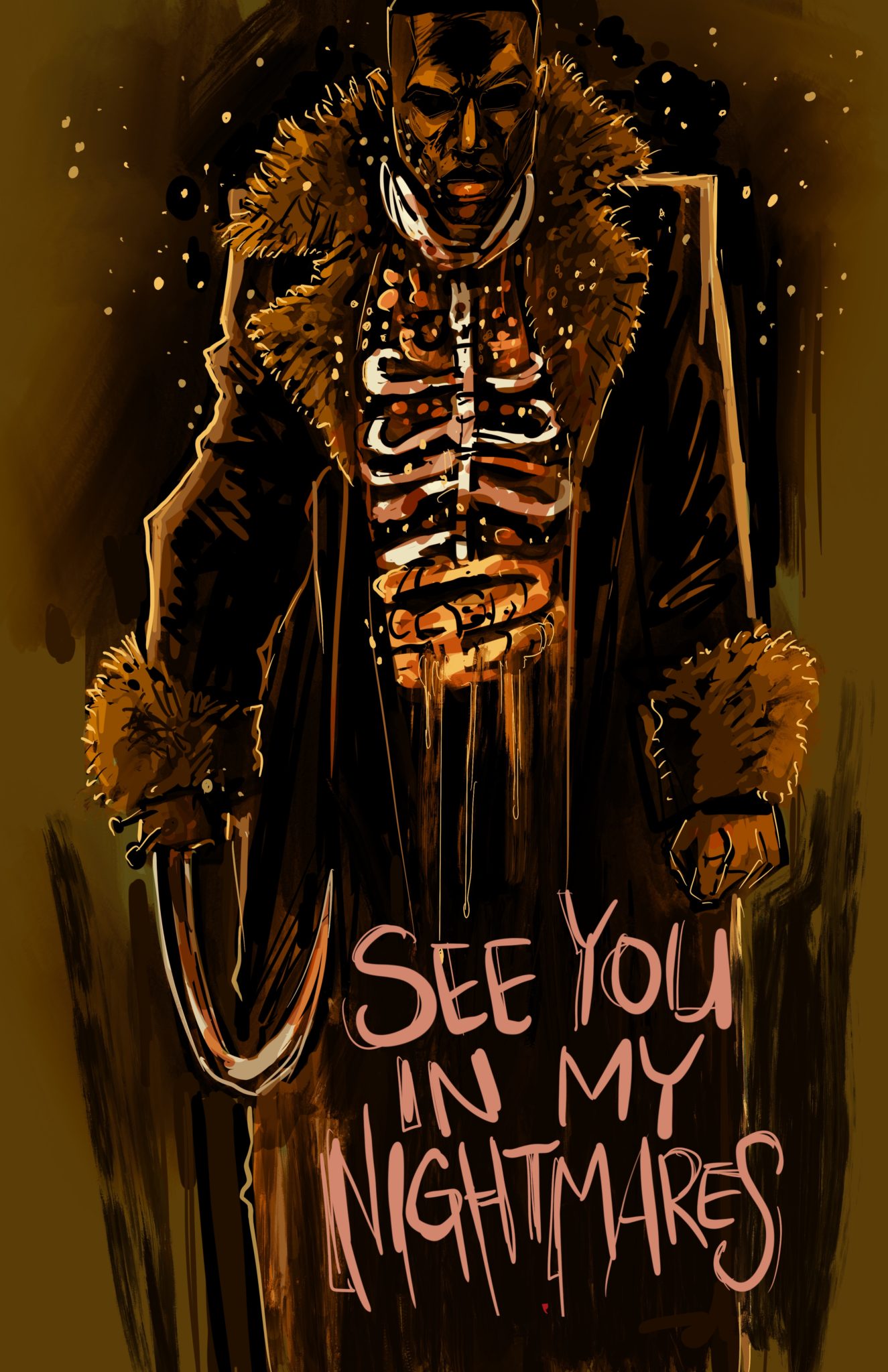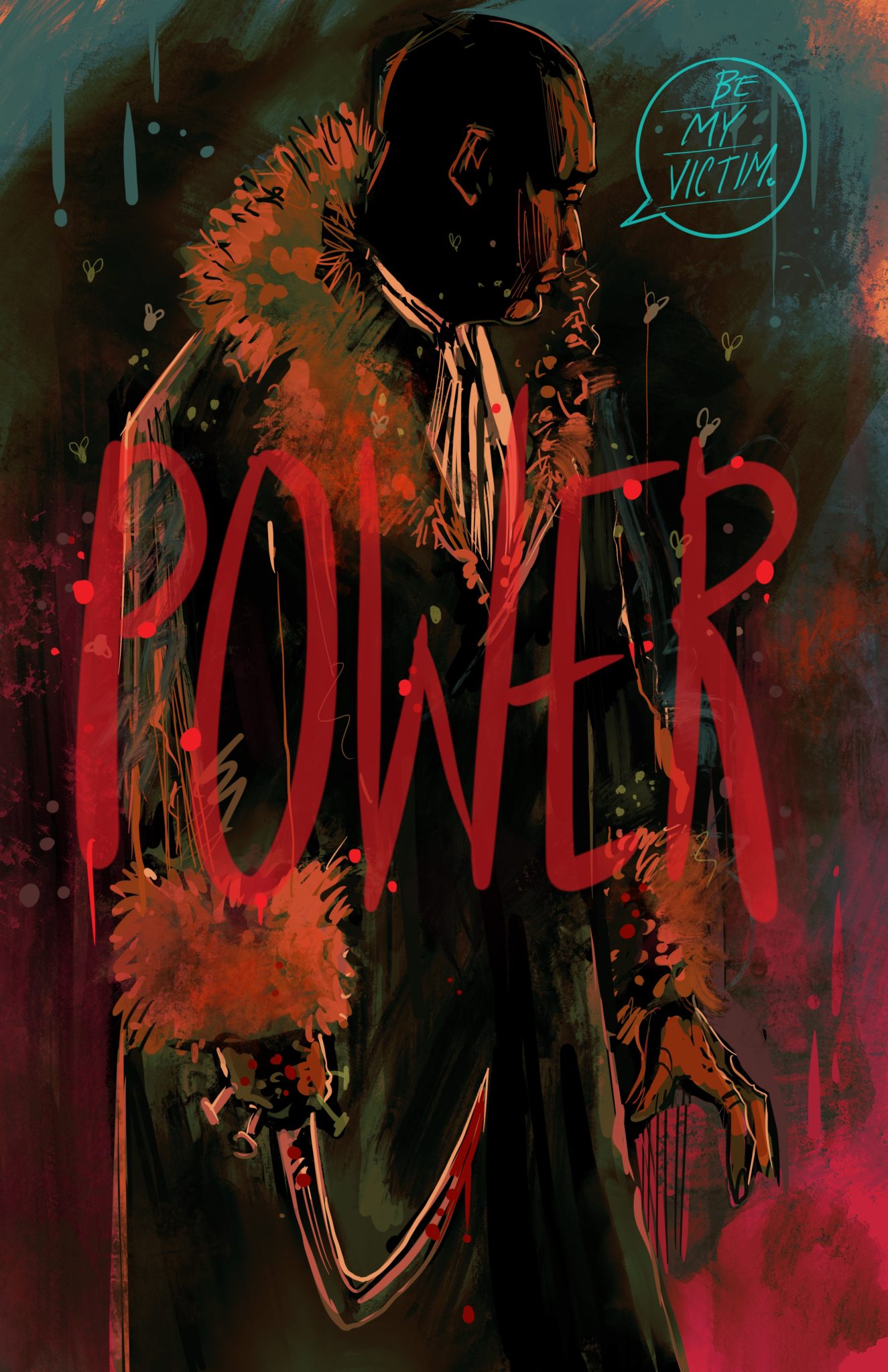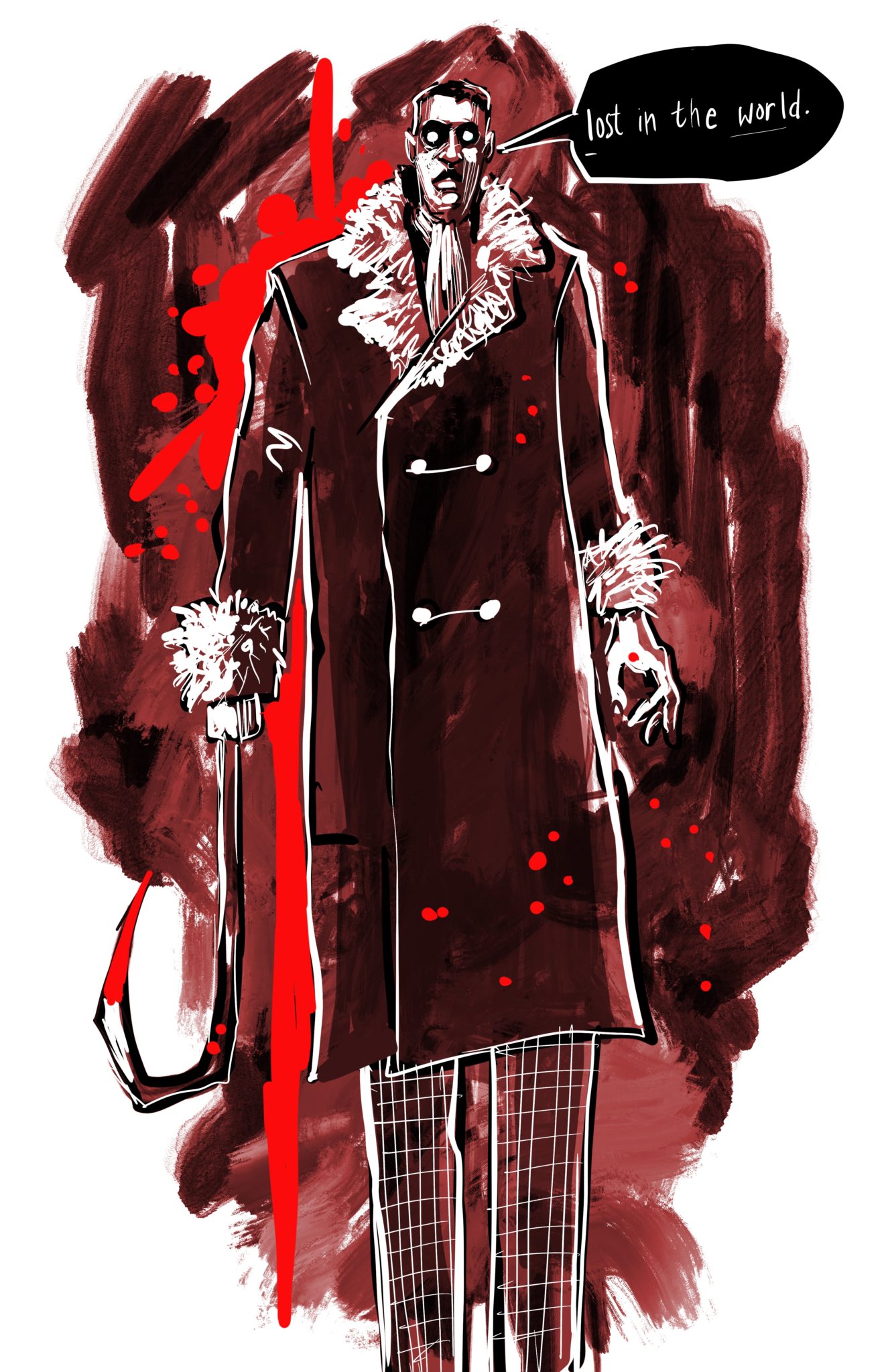Ralph Ellison’s prologue to Invisible Man (1952) states “No, I am not a spook like those who haunted Edgar Allen Poe; nor am I one of your Hollywood-movie ectoplasms. I am invisible understand because people refuse to see me.” By contrast, Reflection Eternal: The Candyman Illustrated Syllabus visibly interrogates and haunts ideas of identity, race, space, and nationhood.

Black Kirby, Blood on the Leaves, (2019). Digital print, 25.5 x 16.5 in. Courtesy of the artist.
Inspired by Clive Barker’s 1992 film, Candyman, Stacey Robinson (Assistant Professor of Graphic Design and Illustration, University of Illinois at Urbana -Champaign) and John Jennings (Professor of Media and Cultural Studies at UC Riverside) team-up as Black Kirby. The provocative name expressed with an aesthetic illustrative style originates from classic comic book artist, Jack Kirby. Like a symbiotic DJ, Black Kirby duo samples comic book rendering coupled with Ethno-Gothic Afrofuturism to revisit and update Barker’s tale — an urban legend resurrected to instill fear and terror. Its roots reveal that a talented Black male artist (the son of a slave) was brutally murdered for falling in love with a white woman. Moonwalking forward, he is now resurrected ironically by a white female graduate student researching the Candyman myth, known intimately by Chicago’s Cabrini Green residents. Upon saying his name five times in a mirror, he appears.

Black Kirby, See You in my Nightmares, (2019). Digital print, 25.5 x 16.5 in. Courtesy of the artist.
See You in My Nightmares depicts the menacing one-armed Candyman with a sharp murderous hook for right-hand facing viewers. Expressionless like the slave narrative /Jim Crow era photos of Black folk posing, this brotha is not sayin “cheese.” The galaxy sepia, black background outline his chinchilla collar and wrist lined pimp-lookin coat. Orange and yellow fluorescent hues drip like blood from his skull chest cavity flowing parallel with the razor-sharp hook and pointing to graffitied work’s title. With a clenched left fist, one must ponder ideas of revenge and justice; are the lines blurred or are they mutually exclusive?
Stronger portrays Candyman as two heads: one with a bloodied hook bursting through burnt sienna head facing downward stands, in contrast, to frontally illustrated lemon yellow flamed portrait. Both are reminiscent of the Southern lynching and sometimes burning mutilation of Black males by insane white mobs. This type of racial violence in the absence of swift justice addressed in these works contribute to narratives about African survival and liberation throughout the diaspora.

Black Kirby, Power, (2019). Digital print, 25.5 x 16.5 in. Courtesy of the artist.
Reflection Eternal adds to the Black male aesthetic continuum like such predecessors as Raymond Saunder’s Jack Johnson (1972) and Barkley Hendricks’ Brilliantly Endowed (1977). Ultimately, this exhibition is for all who have a “sweet tooth” for political interdisciplinary art-making practices.
Reflection Eternal: The Candyman Illustrated Syllabus
August 31,2019 -January 19, 2020
Barbara & Art Culver Center for the Arts
University of California, Riverside
3824 Main Street, Riverside, CA 92501



















0 Comments